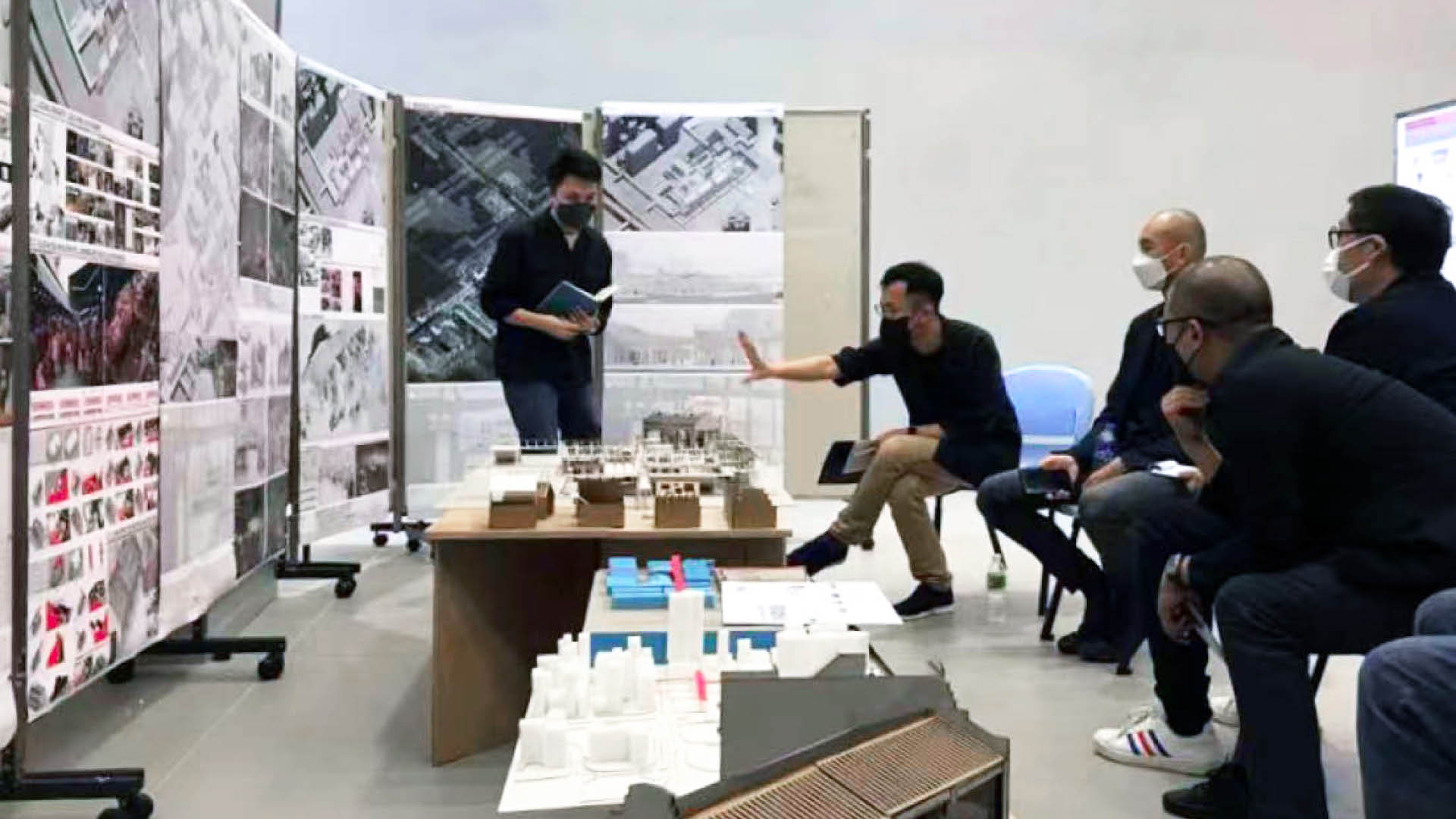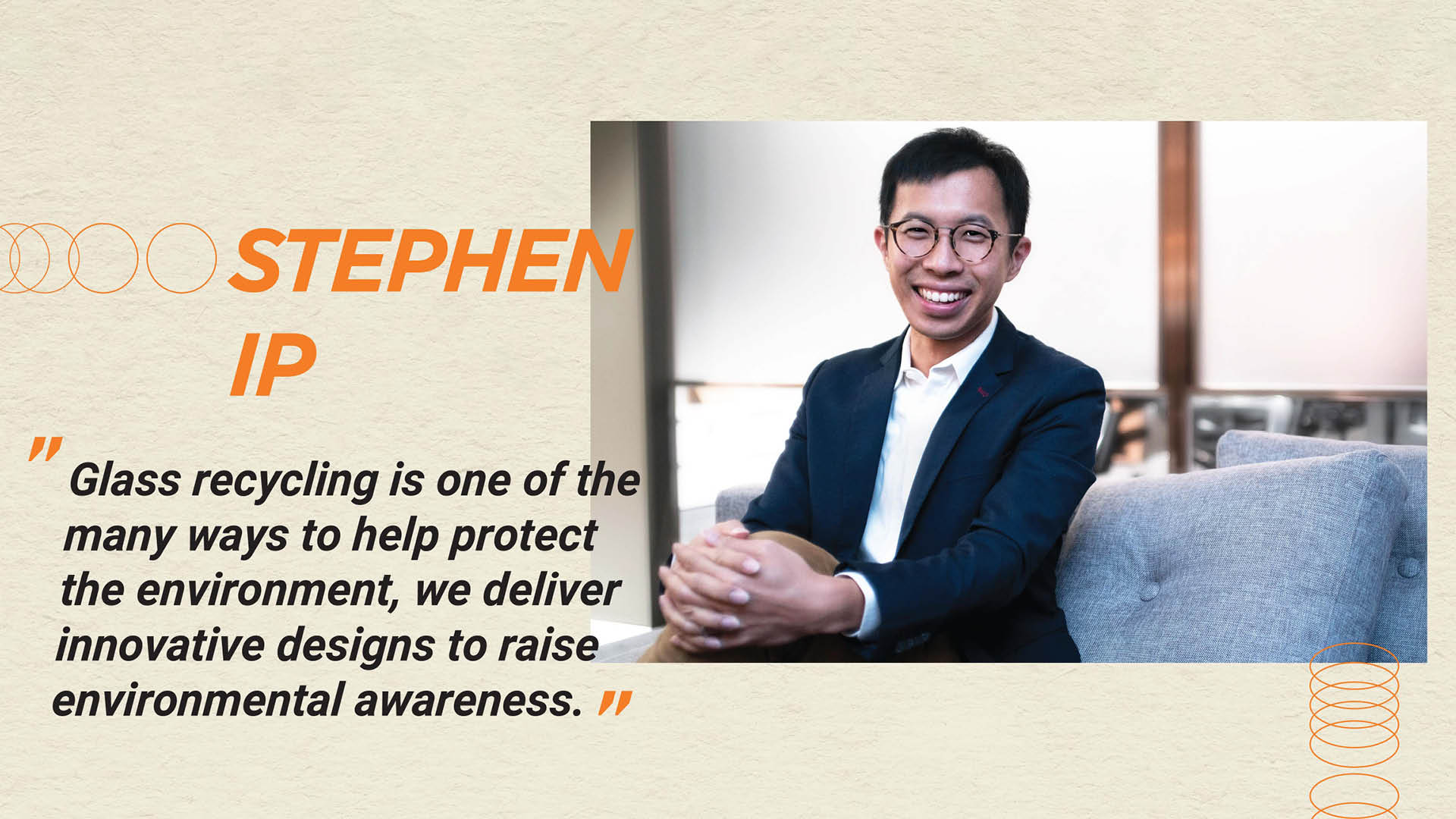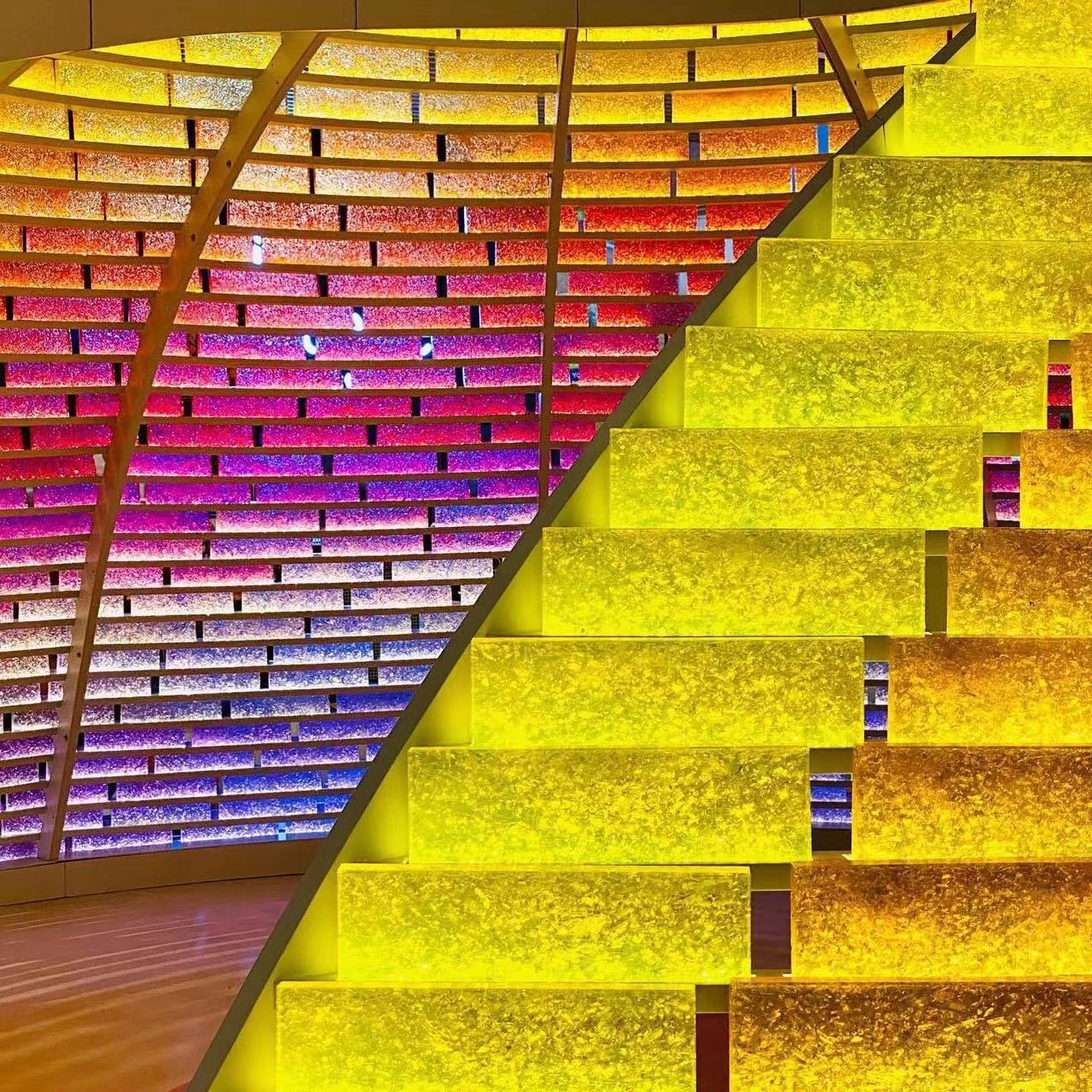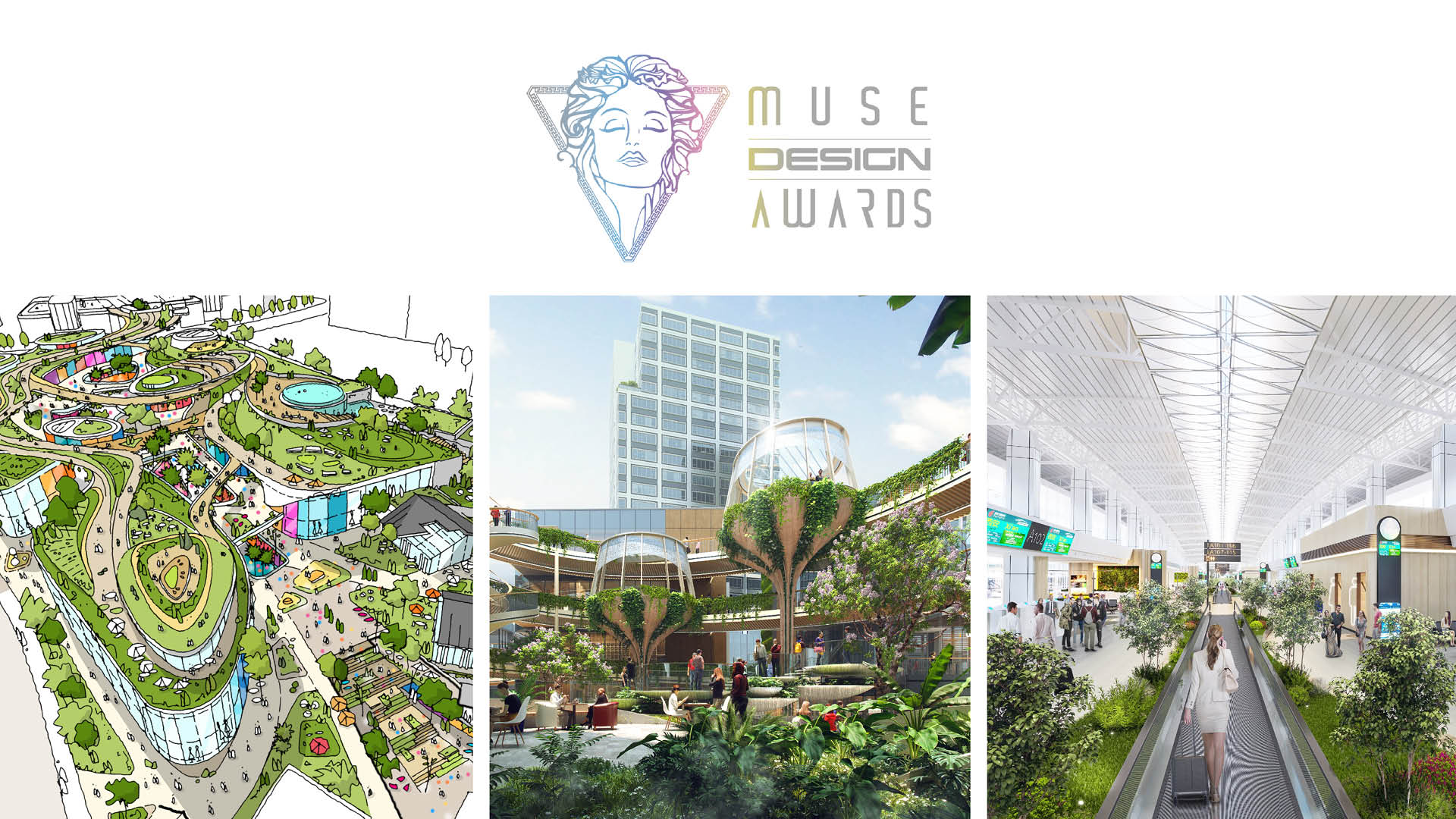
02 June 2022

To mark this year’s #WorldEnvironmentDay on 5 June, we sit down with Stephen Ip, Divisional Director, to share his passion for green design, and how did he use recycled glass to design and raise environmental awareness.
With OnlyOneEarth in mind, Stephen has been actively promoting environmental protection. He has spent years exploring the technologies and expertise behind the glass recycling industry of Hong Kong. His participation in design competitions and exhibitions, including the Recycling Stations at the Mills, Recycled Glass Brick Spiral at deTour, and the Recycled Glass Igloo demonstrated how architecture can inspire and influence people, while exploring the possibilities of transforming recycled glass into building materials.

1. Tell us about your designs with recycled glass.
“I worked together with a group of like-minded friends in 2018 for a competition to build a green community station conducted by the government to raise an environmental concern about recycling glass. In 2019, we worked on a project by the HK Biennale of Architecture and Urbanism at The Mills, where glass bottles get crushed and recycled, creating a glass recycling tower.
In 2020, we amassed the crushed bottles into a product, glass bricks which are our key building element for the installation, providing the second life of the bottle. And the recent projects at TKO Plaza created further opportunities for upcycling glass bottles into sustainable products, demonstrating recycled glass in a different form – a dome- shaped festive installation. “
2. What motivate you to use recycled glass to be the building materials?
“In Hong Kong, only 10% of the hundred tons of glass bottles are recycled. We are surprised by such a low recycling rate, and it prompted us to be actively involved in design that could convey the message of upcycling glass bottles to the public. There is a great improvement area for Hong Kong’s glass management. As architects, we want to take initiative to promote, educate and engage the public with glass recycling.”
3. Could you share with us the glass bottle reborn process?
Recyclers will go to restaurants and bars to collect used glass bottles, collect the empty bottles in the workshop for cleaning, separation, and screening, and then break them into granules after color sorting. When the pigment is added to the glass, the actual color may be slightly different, so the color test stage is the most time-consuming, and it takes repeated experiments and research to create a colorful finished product. We had to deal only with the glass bottles. However, it took us more time than expected to get this installation together. We had to get the correct form factor for brick dimensions and the process was more like an experiment with around 400 pieces of glass bricks. It took 2-3 days to lay it together with bare hands which was also very memorable.
4. How can we use recycled glass in architecture?
We have found that glass can be recycled and molten back into primitive granules, which then can be mixed with resin and made into recycled glass bricks that are semi-transparent and durable. Like the art installation mentioned earlier, we used more than 1,000 recycled glass bricks and we hope to show the community the possibility of recycled glasses, we used more than 1,000 recycled glass bricks. We are exploring possibilities to use recycled glass bricks as façades for buildings and glass screens for interior space in the future. We believe that recycled glass can contribute to the sustainable development of cities, and recycled materials are not only recycled, but also upcycling.
5. Any tips on educating the kids about sustainable living?
“I think it is important to educate the kids through participation. My kids have already taken part in classifying wastes at home. Every weekend, we will bring the wastes to the collection points at our housing estate. This has become an important agenda of our daily life. The smile on my kids’ faces when they engaged with my design was amazing, I am pleased that they learn about the environmental benefits of recycling at the same time. As a father of three children and as an architect, it is my responsibility to build a more livable environment for our next generation.”
Divisional Director at CAN, Stephen Ip concluded: “From the recycled glass art installations to a wide range of projects that we have been working on at CAN, we strive to create resilient, green, and sustainable designs that should have positive impacts on the public, allowing them to engage, to explore and to experience. Recycling habits are more critical than ever. To support sustainable architecture and a green future for generations to come, everyone has their part for the environment.”


